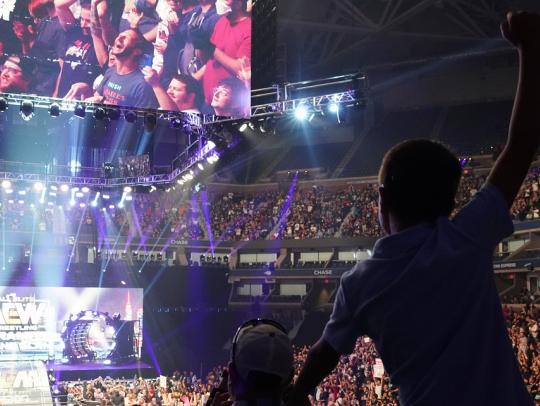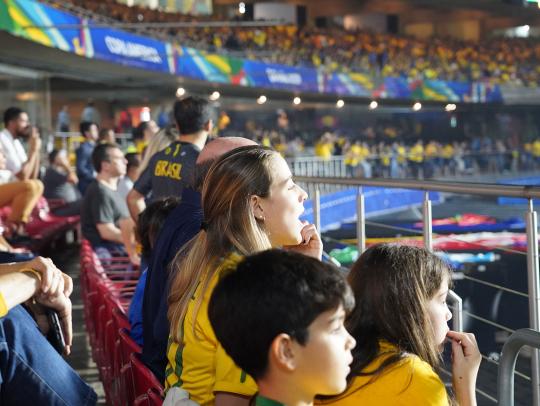Satiating the Hunger for Sports Content in Asia-Pacific

Demand for Sports Digital Rights in Asia-Pacific
In 2018, the market value of sports media rights was at USD 5 billion in Asia-Pacific, excluding China. The value was a 22% increase from 2017, driven by growing demand for digital rights and market growth in India and Australia as well as the 2018 FIFA World Cup [1]. The growing value of sports media rights is expected to continue in 2019 and beyond, with sports bidding rights catching the attention of those beyond television networks. In July 2018, social media site Facebook made a leap into sports broadcasting, securing a £200 million broadcast rights deal with the Premier League, giving it exclusive rights to live broadcast league games in 2019 to 2022 in Thailand, Vietnam, Cambodia and Laos [2].
With the upcoming Sydney Rugby Sevens, 2019 Europe Top 16 Table Tennis Cup and American Super Bowl, what’s in store for the sports broadcasting scene in Asia-Pacific 2019?
Shifting Landscape of Sports Broadcasting
The landscape of sports broadcasting is also shifting away from linear TV to on-demand digital platforms. According to Gabriele Sani, head of marketing Carbon Worldwide, “media consumption is inevitably moving towards digital platforms and sports are still a mostly untapped market for digital.” Coupled with the proliferation of broadband, the growth of online video platforms for sports is expanding, with a number of players investing aggressively in sports rights. Australian telco, Optus, has invested close to USD 300 million for two cycles of EPL football in Australia to push customer acquisition and market share across its broadband services [1].
This has pulled TV networks away from dominating the broadcast markets. Traditional companies have to accommodate sports content audiences who demand more affordability, choice and accessibility to their sports content through partnerships with media companies, tech platforms and content providers. With digital satellite services like direct-to-home (DTH) however, digital content can be delivered on-demand and directly to the consumer’s homes through their digital set-top box.
On-Demand, Personalised Content Experience
In a report published by Media Partners Asia, over-the-top (OTT) delivery was highlighted as the main force behind rights inflation, with sports rights auctions suggesting that OTT is behind 10 to 25% of the media rights value for a sports franchise [1]. In Malaysia, the collaboration between media company Media Prima, internet service provider (ISP) UniFi and subscription video-on-demand (SVOD) service Iflix, has seen growth in the number of users [2]. This partnership with Iflix, the sponsor and official OTT partner for the Malaysian Football League, shows that OTT delivery is ideal for the sports viewer. OTT delivery complements social media usage as the viewer’s favourite programme can be brought to any screen at any time. Fans can virtually congregate and consume live sports, by watching games on mobile devices anywhere while connecting with like-minded fans and chatting with real-time notifications [2].
In football, viewers tend to watch matches while concurrently sharing their views on social media before, during and after games [2]. Sports content audiences also tend to be more mobile and flexible when watching games, demanding any content, anywhere, on any device [3].
Overcoming Challenges of Streaming in Asia-Pacific
However, being broadband-reliant and digital-first to serve sports content needs comes with its challenges. In remote parts of Asia-Pacific, or even mountainous areas and islands, terrestrial infrastructure such as cable or broadband might be inadequate or unstable. Beyond Asia-Pacific’s large cities, broadband connection speeds may be expensive, inconsistent and quite possibly unreliable. A key challenge in delivering sports content digitally in Asia-Pacific is ensuring reliable broadcasting of sporting events.
Being 36,000km above the earth’s surface, satellites transcend geographical challenges through a powerful beam with the capability to broadcast a myriad of channels to a country or continent. As Yew Weng Soo, Vice President, Sales and Market Development, Asia-Pacific at SES Video says, “cable cuts and fibre outages don’t matter and one can be guaranteed to view any sports event in its fully glory” [4].
Satellites have an advantage in remote areas where a terrestrial, fibre-based broadband network would be too costly to install. With satellite-based solutions such as Advanced IP contribution, global transmission of broadcast-quality high definition (HD) video over private Internet Protocol (IP) networks and the public internet can be achieved. The software-based platform is easily installed and deployed, and the software highly adaptable to pre-configured or pre-existing hardware. Leveraging on an existing satellite network and current hardware delivers the ideal audience experience—a smooth, disruption-free video transmission at an affordable price.
Having unstable broadband services is also not a deterrence for viewers in remote areas to enjoy uninterrupted playout of sports content. Through SES’s Network Offloading, high-quality video content is offloaded locally to ISPs without an internet connection. Sports content can thus be accessed without buffering, delays or disruption.
Realising the Full Potential of Regional Sports Broadcasting
Market analysts have predicted that bidding for live sports rights will escalate in these two years, especially in ad-dominated growth economies such as India and Indonesia along with mature, large markets such as Australia and Japan [1]. In sports content franchises, free highlights and archive content are shared. Sports content businesses also enjoy direct monetisation. These services provide direct and customised fan relationships that can propel engagement and merchandise sales [1]. For NBA, partnering with Japanese VoD service Rakuten TV has allowed it to offer its fans unique experiences such as a fan meet with NBA Champion Draymond Green, as well as a trial of the NBA 2K19 video game and an NBA League Pass virtual reality experience [5].
Additionally, sports leagues and federations can help distribution partners augment packages with their own services and offerings. Some sports leagues, however, choose to bypass working with content distributors to offer their own fans direct sports content [1]. For NBA in Asia-Pacific, they have a partnership with China that distributes about 600 games per year. The basketball sports league also plans to expand growth in Southeast Asia through partnerships with 25 different media partners, and a grassroots development plan that includes running workshops with local governments to get more kids to play basketball. The programme has already reached 5 million kids in 2018, and is aiming to reach nearly 20 million kids by the end of 2019 [6].
For sports content businesses, this time is a prime opportunity to satiate the region’s demand for sports broadcasting. SES’s understanding of the unique challenges in broadcasting in Asia-Pacific, coupled with its established satellite system and capabilities that can readily support the unique needs for sports broadcasting in Asia, make it the fitting partner for sports content businesses.
Contact us today to find out how we can help your content business broadcast sports in Asia-Pacific.
[1] Media Partners Asia: MPA Report 2018
[2] Marketing Interactive: Are Tech Companies Fast Becoming the Front Runners in Live Sports Broadcasts?
[3] Telstra Exchange: Sports Fans and Broadcasters Agree, Asia is the Place To Be
[4] SES: Satellite Broadcasting in APAC to see Sustained Growth Thanks to 3 “C”s
[5] Rakuten Today: Rakuten Welcomes NBA Champion Draymond Green to Tokyo with Fan Event
[6] CNBC: NBA Looking at Handful of Asian Countries to Become Big Markets




